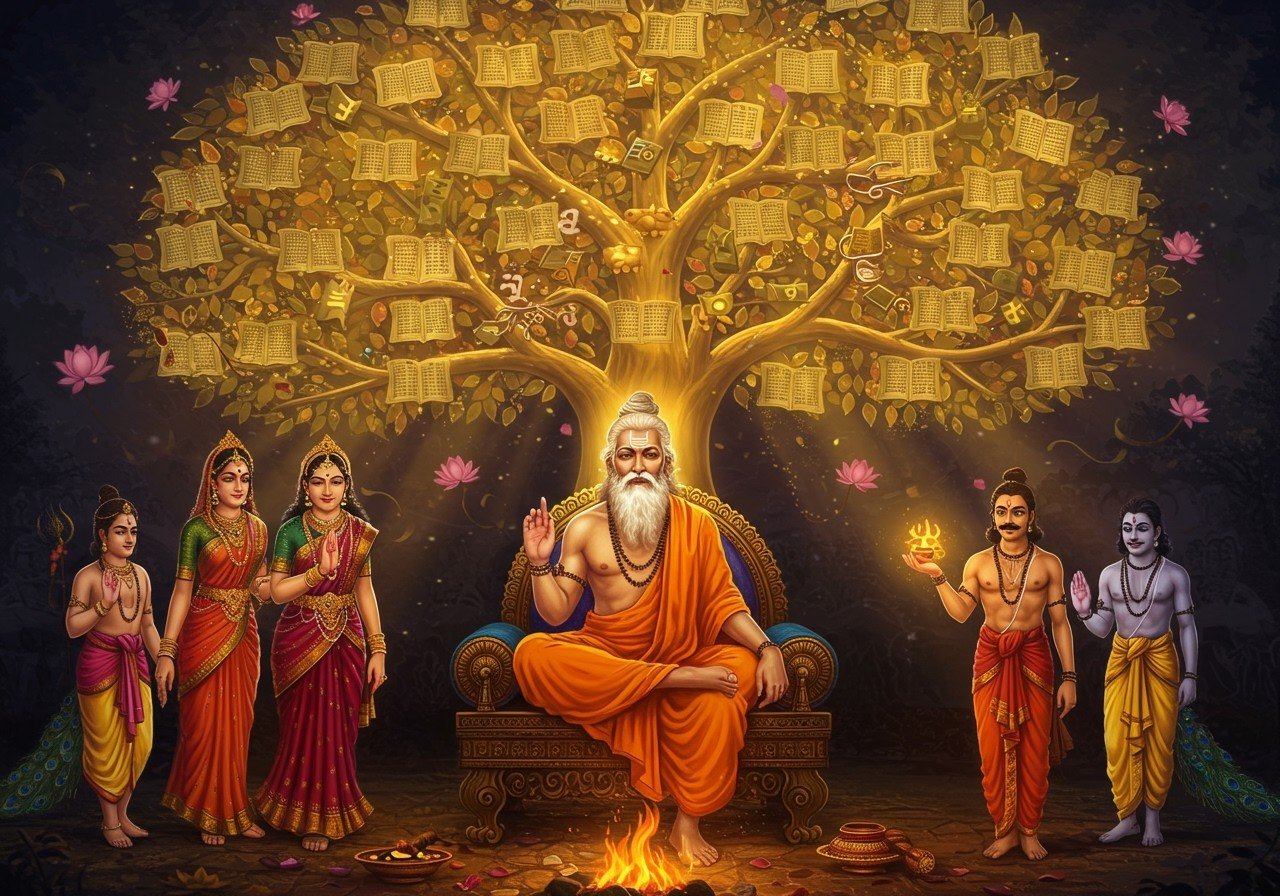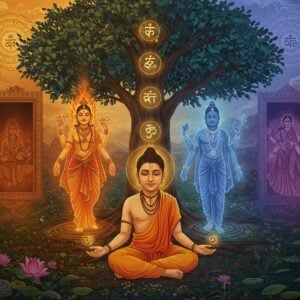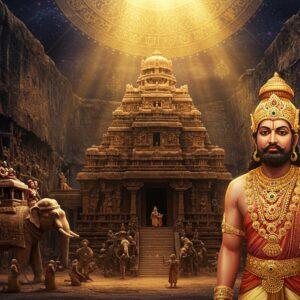
Sage Vyasa, a pivotal figure in Hindu mythology and philosophy, is renowned as the compiler of the Mahabharata, one of the two major Sanskrit epics of ancient India. His influence extends beyond literature, deeply impacting spiritual and cultural traditions. His life provides valuable insights into ancient Indian society, particularly through his familial connections. These relationships are essential to understanding the narratives and complexities of the Mahabharata.
Vyasa’s Family and the Mahabharata
Vyasa’s life is intricately woven into the tapestry of the Mahabharata. Born to Satyavati and Sage Parashara, his lineage places him at the heart of Kuru dynasty’s history. Satyavati, a woman of remarkable strength and vision, played a crucial role in shaping the destiny of the Kuru clan. Her marriage to King Shantanu brought stability to the kingdom, yet their story took an unexpected turn. Satyavati’s sons, Chitrangada and Vichitravirya, met untimely ends, leaving the throne without an heir. This critical juncture led to a pivotal decision, invoking an ancient custom known as Niyoga.
Niyoga, a practice allowing a widow to bear children with a designated relative, ensured the continuation of the family line. In accordance with this custom, Vyasa fathered children with Ambika and Ambalika, the widows of Vichitravirya. These unions resulted in the birth of Dhritarashtra and Pandu, figures destined to shape the future of the Kuru dynasty. Vyasa also fathered Vidura, renowned for his wisdom and just counsel, with a maidservant. These births established Vyasa as the grandfather of both the Kauravas and the Pandavas, the two warring branches of the Kuru family whose conflict forms the central narrative of the Mahabharata.
You can explore a vast collection of spiritual and cultural items at Poojn.in. Enhance your understanding of the Mahabharata and connect with its timeless wisdom through our range of products.
The Significance of Vyasa’s Wives and Children
Vyasa’s wives and children represent more than just figures in a genealogical tree; they embody the cultural values and traditions of ancient India. Ambika’s son, Dhritarashtra, though born blind, ascended the throne and became the father of the Kauravas. Pandu, born from Ambalika, faced a curse that prevented him from fathering children, leading to the divine intervention that resulted in the birth of the Pandavas. Vidura, the son born through Niyoga with a maidservant, emerged as a voice of reason and wisdom. Each of these sons played a critical role in the Mahabharata’s narrative, shaping the epic’s course and contributing to its enduring legacy. Explore spiritual books and other items on poojn.in to deepen your understanding of the Mahabharata’s profound message.
Niyoga: A Window into Ancient Indian Culture
The practice of Niyoga offers valuable insights into the social and cultural norms of ancient India. It underscores the paramount importance placed on lineage, inheritance, and the continuation of family traditions. Niyoga addressed situations where a male heir was absent, ensuring the preservation of family name and property. The application of Niyoga within the Mahabharata’s narrative highlights the complex ethical and social dilemmas faced by individuals within the constraints of societal expectations.
Discover a wide range of authentic puja items and spiritual products on Poojn.in, India’s leading online store for cultural and religious goods. Our diverse collection caters to various spiritual practices and traditions.
Vyasa’s Enduring Legacy
Vyasa’s legacy extends beyond his role as a narrator and compiler of the Mahabharata. He is revered as a sage, philosopher, and spiritual guide. His profound insights into dharma, karma, and moksha have shaped Hindu thought for millennia. His life and work continue to inspire generations, offering guidance on leading a righteous life and understanding the complexities of human existence. Find spiritual and cultural products at poojn.in to enhance your spiritual journey.
Frequently Asked Questions
How is Vyasa connected to the Mahabharata? Vyasa is not only the author of the Mahabharata, but also a key character, acting as the grandfather of both the Kauravas and the Pandavas. His presence connects generations and intertwines his personal story with the epic narrative. This intricate connection enhances the Mahabharata’s depth and complexity, making it a multi-layered work of literature and philosophy.
Who were Vyasa’s parents? Vyasa was born to Satyavati and Sage Parashara. Satyavati later married King Shantanu. Her vision and strategic decisions profoundly affected the Kuru dynasty, shaping events leading to the Mahabharata. Vyasa’s parentage is crucial in understanding his role within the epic’s narrative.
Who was Vyasa’s wife? While Vyasa’s relationships with Ambika and Ambalika led to the births of Dhritarashtra and Pandu, these unions weren’t traditional marriages. They were born out of the practice of Niyoga, reflecting the societal norms and pressures of the time. It’s crucial to understand the context of these relationships to fully appreciate the dynamics of the Mahabharata.



Useful searches for hindus